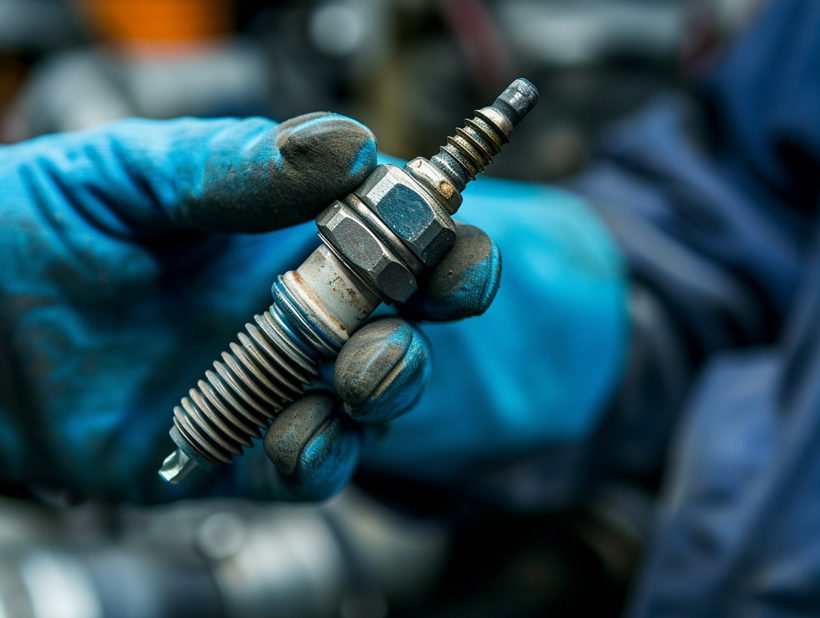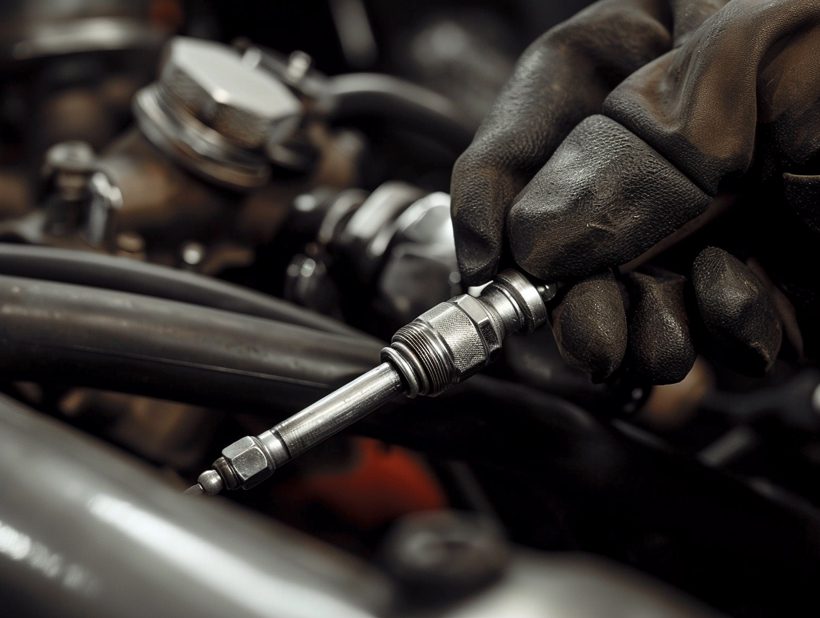Replacing spark plugs is a quintessential task for any DIY car enthusiast or anyone looking to save on maintenance costs. It’s a straightforward process that can have a significant impact on your vehicle’s performance. I’ve found that with the right tools and a bit of patience, anyone can tackle this job.
Through my years of tinkering with cars, I’ve gathered a wealth of tips and tricks to make the spark plug replacement process as smooth as possible. Whether it’s your first time under the hood or you’re a seasoned pro, I’ll guide you through each step to ensure your engine runs more efficiently and reliably.
Gathering the necessary tools and materials
Before diving into the process of replacing your car’s spark plugs, it’s imperative to have the right set of tools and materials at hand. Preparation is the key to a smooth DIY experience. Let’s go over what you’ll need.
First up, you’ll need a spark plug socket. This specialized socket has a rubber insert which helps grip the spark plug snugly without causing damage. Alongside this, a ratchet and an extension bar are essential for reaching into the depths of the engine. The length of the extension will vary depending on your vehicle model, but generally, a 6-inch extension should suffice.
You may also need a torque wrench. It’s critical for ensuring that the spark plugs are tightened to the manufacturer’s specifications. This helps prevent accidental over-tightening that could damage the plugs or under-tightening that might cause a plug to blow out.

Moreover, a gap gauge comes in handy when you’re checking that each new spark plug has the correct gap specified for your engine. This small yet crucial step affects how the spark plugs will perform.
Lastly, ensure you have a clean cloth or rag and some anti-seize lubricant. The cloth is for wiping away any debris around the ignition coils and the lubricant is to lightly coat the threads of the new spark plugs which aids in future removals.
Here’s a quick rundown:
- Spark plug socket
- Ratchet and extension bar
- Torque wrench
- Gap gauge
- Cloth or rag
- Anti-seize lubricant
Remember to consult your car’s manual. It might have specific recommendations tailored for your particular model. Also, investing in quality tools can make the job easier and prevent damage to your car’s components. With these materials ready, you’re set to tackle the spark plug replacement and get your car running smoothly again.
Safety precautions before starting the job
When it comes to maintaining my car, I take safety seriously, especially during procedures like replacing spark plugs. It’s more than just a step in the process‚Äîit’s a set of actions designed to protect me and those around me. Here are some safety measures I always adhere to:
- Work in a Well-Ventilated Area: Engine work can release harmful fumes. An open-air space or a garage with doors wide open is where I’ll usually set up.
- Cool Down Your Car: Components under the hood can be extremely hot. I make sure my car has been off for at least a few hours before I start.
- Remove Jewelry and Loose Clothing: To avoid any mishaps, I take off watches, rings, and ensure my clothing isn’t loose enough to get caught in moving parts.
- Wear Protective Gear: Gloves and safety glasses are non-negotiable for me to shield against electric shock and debris.
Here are additional steps you won’t want to overlook:
- Disconnect the battery, starting with the negative cable, to prevent any electrical short circuits.
- Keep a fire extinguisher reachable in case of an unexpected spark or flame.
- Use the correct tools to prevent stripping the spark plug threads which can cause a host of engine issues.
- Know the torque specifications from your car’s manual to avoid overtightening the spark plugs.
If there’s one thing I’ve learned, it’s that no step is too small when it comes to safety. From shielding against potential hazards to using the right tools for the job, each action is a vital component in a successful and safe spark plug replacement. It’s all part of giving your car the care it deserves while prioritizing your well-being. Remember, skipping on safety can lead not just to car malfunctions but also personal injuries ‚Äì and that’s a risk I’m never willing to take.
Locating and accessing the spark plugs
After ensuring the vehicle’s safety and having the necessary tools at my disposal, I turn my attention to identifying the spark plug locations. Most spark plugs are situated at the engine’s top or side, typically linked to the thick rubber wires that are the ignition coils or spark plug wires. Newer models might house them under an engine cover, which I’ll gently remove first. For accurate identification, I always refer to the car’s manual since engine designs can vary.

Here’s a step-by-step breakdown for locating them:
- Open the hood and secure it safely.
- Identify the engine cover if present; remove it by unfastening clips or screws.
- Trace the spark plug wires or ignition coils. These wires are pretty conspicuous and they snake down into the engine.
Accessing spark plugs can require some finesse; they’re generally recessed within the engine block. Keeping a flashlight handy helps me peer into the nook where spark plugs hide. My goal is to disconnect the spark plug wire or coil without causing any damage. So, I grasp the base of the wire or the coil firmly and pull straight out to avoid snapping the connector.
- Pull the spark plug wire by the boot, not the cable.
- If encountering an ignition coil, unscrew any bolts holding it in place before removal.
In preparation for the removal process, I ensure to clear any debris around the spark plug area. A quick blast of compressed air around the spark plug well prevents dirt from falling into the combustion chamber when removing the spark plug. This precautionary step is crucial since even a small amount of dirt or grit can lead to engine damage.
Once the area is clear and the wires or coils are removed, I’m ready to begin the actual process of changing the spark plugs. My next step involves using the right techniques and a specific tool‚Äîa spark plug socket‚Äîto unscrew and replace each plug efficiently and effectively.
Removing the old spark plugs
Once you’ve ensured safety and located the spark plugs, removing the old ones is the next crucial step. Approach this task carefully to avoid damaging the spark plug threads in the cylinder head.
First, I start by disconnecting the spark plug wire or ignition coil. It’s critical to do this one at a time to maintain the correct firing order. Gently twist and pull the wire by the boot or disconnect the coil to free it. Here’s the technique I follow:
- Grasp the boot firmly
- Twist it slightly
- Pull straight out to avoid damaging the wire
If you find resistance, don’t yank. Instead, use a back-and-forth motion until the boot loosens.
Next, I use a spark plug socket with a rubber gasket to grip the plug. This is an indispensable tool for the job. My preference is a long-handled ratchet to give me enough leverage without exerting excessive force. I place the socket over the plug, ensure it’s seated properly, and turn counterclockwise. If it’s your first time, the plugs may be quite tight, but they should loosen after the initial turn.
Here is the sequence I ensure is followed:
- Set the socket correctly
- Turn counterclockwise
- Apply steady pressure—avoid jerking
Keep in mind that patience is key here. If a plug is being stubborn, a little penetrating oil and some time can make a world of difference.

Once the old plug is loose, I unscrew it by hand. It’s a good practice to inspect the old spark plugs once they’re removed. Discoloration, oily residue, or damage can be indications of other engine issues. Analyze the condition of each spark plug for clues about engine performance:
| Condition | Possible Engine Issue |
|---|---|
| Oily residue | Worn engine components |
| Discoloration | Incomplete combustion |
| Damage | Detonation issues |
Taking a moment to evaluate the old spark plugs can save me from future headaches by hinting at any underlying issues that I might need to address.
Inspecting the spark plugs and diagnosing issues
After carefully removing the old spark plugs, it’s crucial to inspect them as they can tell you a lot about the health of your engine. Here’s what I do when I examine spark plugs:
- Check the Electrode: I look for any damage or wear. A rounded electrode indicates aging, which can impair spark quality.
- Examine the Insulator: White deposits on the insulator can suggest a lean fuel mixture or possibly coolant leaks.
- Identify Oil Contamination: Black, oily deposits might indicate a more severe issue like a leaking valve seal or worn piston rings.

I use these observations to gauge potential engine problems, but there are specific patterns to watch out for:
- Normal Aging: A light grey or tan colored insulator and slight electrode wear are normal. It means the spark plug has been working adequately but could simply be old.
- Running Rich: If the tip is sooty and black, the engine might be running rich, meaning too much fuel is being introduced to the mixture.
- Overheating: When the insulator is blistered or the electrode is melted, it’s a sign the spark plug is overheating, which could be due to a lean running engine or a deposit buildup.
To help illustrate, here’s a quick reference table:
| Condition | Possible Indication |
|---|---|
| Rounded Electrode | Aging |
| White Insulator Deposits | Lean Fuel Mix/ Coolant Leaks |
| Black Oily Deposits | Oil Contamination |
| Light Grey/Tan Insulator | Normal Wear |
| Sooty Black Tip | Rich Fuel Mix |
| Blistered Insulator | Overheating Engine |
By pinpointing these tell-tale signs, I get a clearer picture of my engine’s condition. Replacing spark plugs is also a good time to address these underlying issues before they turn into costlier repairs. Careful diagnosis not only preserves the health of my car but also optimizes its performance and fuel efficiency. After all, knowing what to look for puts me one step ahead in maintaining my vehicle’s health.
Gap adjustment and choosing the right spark plugs
When tackling a spark plug replacement, one critical but often overlooked step is gap adjustment. Spark plugs have a specified gap that must be set accurately to ensure optimal engine performance. I’ll walk you through this with care and precision.
First, it’s essential to find the recommended gap size for your vehicle’s spark plugs. This information is typically located in your vehicle’s service manual. Once you have the right specifications:
- Measure the current gap with a gap gauge
- Adjust it by gently bending the ground electrode
- Re-measure to confirm it’s within the vehicle manufacturer’s specifications
Choosing the right spark plugs is just as important as setting the gap correctly. Spark plugs come in different types:
- Copper
- Platinum
- Iridium
Each type has its benefits and compatibility based on your car’s make and model. Copper plugs are typically the least expensive but have a shorter lifespan. Platinum and iridium spark plugs offer a balance of longevity and performance, but tend to be more costly.
Moreover, consider the heat range of the spark plug, which is a measure of how quickly the plug can transfer heat from the combustion chamber to the engine’s cooling system. Selecting a spark plug with the correct heat range is vital for preventing engine issues. Usually, you can find this information in your owner’s manual or by consulting with an auto parts professional.
Lastly, I ensure the spark plug’s thread size and length match the vehicle’s requirements. Installing a spark plug that doesn’t fit perfectly can lead to serious engine damage. Here’s a quick reference to keep in mind before you finalize your purchase:
| Feature | Check For |
|---|---|
| Gap Size | Specific to vehicle’s manual |
| Plug Type | Copper, Platinum, Iridium |
| Heat Range | Matches engine’s cooling needs |
| Thread Size and Length | Matches vehicle’s requirements |
By paying attention to these details, I ensure that I not only replace the spark plugs but also enhance the engine’s performance. Keeping these key guidelines in mind directs me toward smooth and efficient vehicle maintenance. Remember, each step taken here contributes to the overall well-being of the car.
Installing the new spark plugs
Once you’ve set the gap and made your selections, installing the new spark plugs is a critical step that requires diligence and precision. I’ll guide you through the process, ensuring you have all the knowledge necessary to do the job correctly.

Prepare the Spark Plug Socket
Before you start, ensure you have a spark plug socket, which typically has a rubber insert to hold the spark plug snugly without damaging it. I like to inspect the rubber insert before use to confirm it’s in good condition.
Inserting the Spark Plug
Installing the new spark plug involves a gentle touch. I carefully place the plug into the socket and lower it into the cylinder head. To avoid cross-threading, I always start threading the new spark plug by hand. It ensures that it’s correctly seated and aligned.
Tightening to Specification
Using a torque wrench, I tighten the spark plug to the manufacturer’s recommended torque. This specification can typically be found in your car’s manual. Torque is crucial since over-tightening can damage the threads or the plug, while under-tightening can lead to poor engine performance or a blown plug.
| Torque Range | When to Use |
|---|---|
| Low | Aluminum cylinder heads or when specified by the manual |
| Medium | Most common range specified for standard spark plug types |
| High | Rare and usually for specialized vehicles |
Reattach the Ignition Components
With the new plug securely in place, I reconnect the spark plug wire or reattach the ignition coil. It’s important to ensure that these connections are secure for proper engine function. An improperly seated wire or coil can cause misfires or poor engine performance.
To summarize the key steps:
- Check that your spark plug socket is in good condition.
- Gently insert the spark plug and start threading by hand to avoid cross-threading.
- Tighten the spark plug to the manufacturer’s recommended torque.
- Reattach the spark plug wire or ignition coil securely.
Torqueing the spark plugs to the correct specifications
After inserting the new spark plug into its seat, it’s crucial that I pay close attention to torqueing it correctly. Over-torquing can damage the spark plug or the threads in the cylinder head, while under-torquing could lead to a poor seal or even a blown spark plug. That’s why I always refer to the owner’s manual or a trusted repair guide for the exact torque specifications for my vehicle’s engine.

Here’s my step-by-step guide to torqueing spark plugs properly:
- Step 1: Position the torque wrench onto the spark plug socket. I ensure the wrench is set to the specified torque value, which varies according to the engine make and model.
- Step 2: Turn the wrench gently until it reaches the pre-set torque value. A “click” sound usually indicates that I’ve hit the correct torque.
- Step 3: If a torque wrench isn’t available, I employ the “hand-tight plus a quarter-turn” method for a regular plug or a “hand-tight plus a sixteenth-turn” for a taper seat plug as an alternative. While this isn’t as precise as using a torque wrench, it tends to be better than a guesstimate.
Here is the estimated torque range for different spark plug sizes:
| Spark Plug Thread Diameter | Torque Range (lb-ft) |
|---|---|
| 10mm Diameter | 7-15 |
| 12mm Diameter | 10-20 |
| 14mm Diameter | 15-30 |
| 18mm Diameter | 20-40 |
For added assurance, I’ll often check the torque specification against multiple sources or even call the dealership or a professional mechanic for confirmation. Remember, each engine may have its unique requirements, so it’s essential that I don‚Äôt rely solely on generic information. Using the correct torque ensures the longevity of the spark plugs and maintains the overall health of my engine.
Reconnecting the spark plug wires
Once you’ve finished tightening the new spark plugs, it’s time to reconnect the ignition components. This step is crucial to ensure your car’s engine fires up and runs smoothly after the replacement. Here’s how you can securely reconnect the spark plug wires:
- Start by matching each spark plug wire to its respective plug. Spark plug wires are usually different lengths and can only reach their specific spark plug.
- Grasp the boot of the spark plug wire, which is the thicker part where the wire connects to the plug. Firmly push it onto the spark plug until you hear a click, indicating it’s properly seated.
- Avoid pulling or twisting the wires to prevent damage. The connections should be snug but not overly tight.
It’s important to reconnect each wire one at a time to avoid crossing them, which can cause misfiring. If you’re unsure about the order, refer to your car’s service manual or the labels you applied during the disassembly process.
For a better understanding, let’s break down the key objectives:
- Ensure correct order: Reconnect wires in the precise order they were removed to maintain firing sequence.
- Securely attach: Listen for the click as confirmation that the wires are properly affixed.
- Avoid force: Excessive force can damage the wires or boots.
Double-check each connection to verify that it’s not loose. A loose spark plug wire could lead to an array of engine issues, including a misfire or poor fuel economy.
Once the wires are connected, it’s a good idea to give your work area one last inspection:
- Clear away any tools or debris from around the engine.
- Confirm there are no loose parts or disconnected wires.
Reassembling the engine cover is the next step after ensuring all the spark plug wires are accurately and securely connected. By handling this task thoroughly and attentively, you’re helping your vehicle maintain its performance and, more importantly, safeguarding the reliability of your work.
Testing the newly replaced spark plugs
After carefully installing new spark plugs and reassembling the ignition components, it’s crucial to test them to ensure they’re functioning correctly. This step verifies that all your hard work has paid off and that your vehicle will operate smoothly.

To begin, I’ll start the engine and listen for any irregularities such as misfires, hesitation, or rough idling, which could indicate a problem with the installation. Here’s how I perform a systematic check:
- Start the Engine: Begin with a cold engine. A warm engine might mask certain issues.
- Listen Carefully: A smooth hum indicates a good start, while sputtering or knocking sounds may signal trouble.
- Rev the Engine Slightly: Lightly revving the engine helps me assess its responsiveness and ensures there are no stalls that could point to spark plug issues.
- Idle Check: Letting the car idle for a minute allows me to monitor for consistent performance without drops in RPMs that could suggest misfiring.
Visual inspection is also a part of my process. With the engine off, I:
- Check for Proper Installation: Verify that each spark plug wire or coil is firmly attached and securely in place.
- Look for Damage: Any visible damage to the wires or coils could compromise the efficiency of the spark plugs.
- Inspect for Cleanliness: No debris should be around the spark plug area, which can affect performance.
To be extra meticulous, I may use a diagnostic tool for a more in-depth analysis. These devices can provide error codes that help identify any underlying ignition issues not apparent through auditory and visual checks.
Below is a quick reference guide I refer to that outlines common spark plug test outcomes:
| Test Outcome | Possible Indication |
|---|---|
| Consistent Idle | Correctly functioning spark plugs |
| Misfire Codes | Faulty spark plug connection or installation |
| Rough Idling | Possible vacuum leak or damaged ignition coil |
| Engine Hesitation | Incorrect spark plug gap or damaged wire |
I always remember to perform these tests in a well-ventilated area, staying mindful of safety as I diagnose the performance of my car’s new spark plugs. By taking these measures, I ensure that the engine runs at peak performance and that the effort I’ve invested in replacing the spark plugs truly pays off.
Conclusion
Replacing spark plugs is a practical DIY task that can significantly improve your vehicle’s performance and longevity. With the right tools and a bit of patience, you’ve seen how straightforward the process can be. Remember, attention to detail‚ from ensuring the correct gap to proper torque specifications‚ makes all the difference. And once you’ve reconnected everything and given your work area a thorough once-over, the real test is in the ignition. A smooth start and steady idle are your rewards for a job well done. As always, safety first and precision second will keep both you and your car in great shape. So go ahead, give it a try and enjoy the satisfaction of maintaining your vehicle’s spark.
